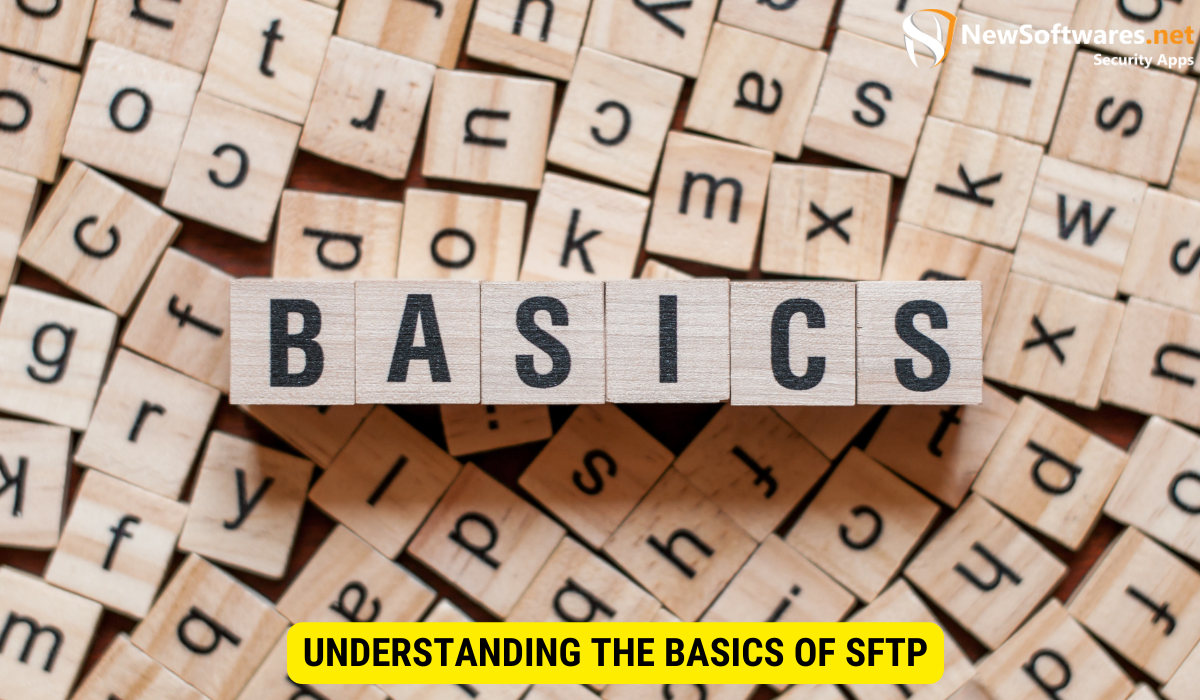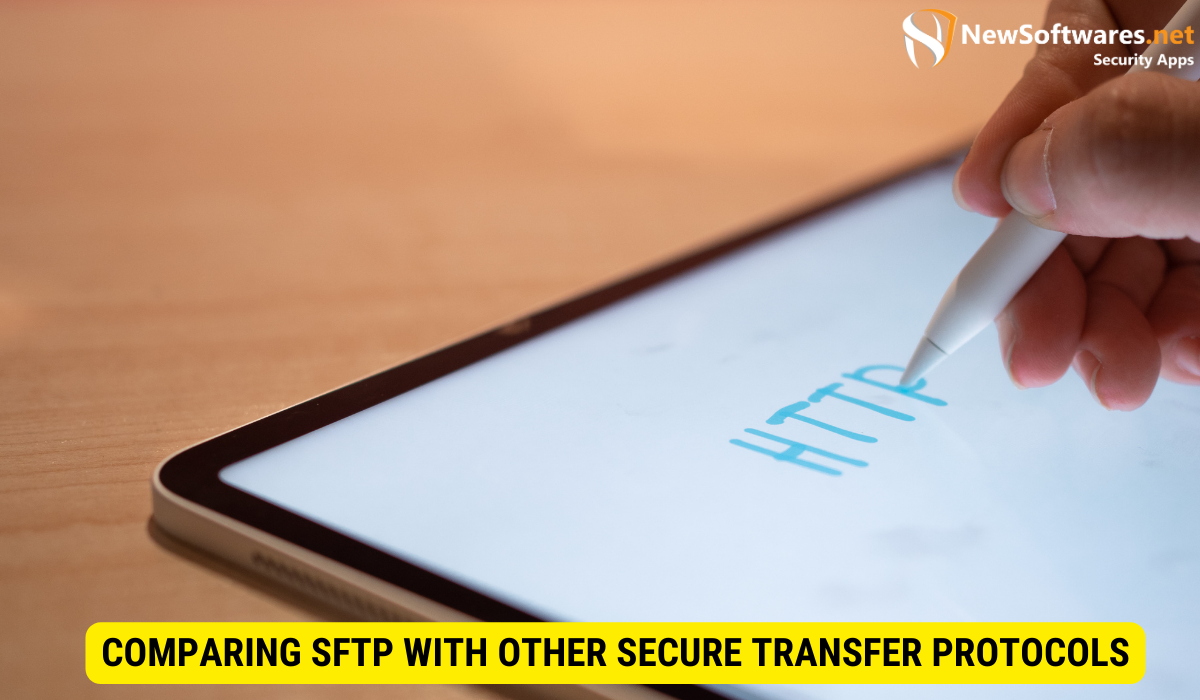SFTP (Secure File Transfer Protocol) enhances data security by employing additional authentication methods such as public key authentication and password authentication, along with robust encryption techniques.
SFTP, which stands for Secure File Transfer Protocol, is a widely used method for securely transferring files over a network. One of the primary concerns when using any transfer protocol is ensuring that the data remains secure during transmission. Together, we will dive deep into the world of SFTP and explore the additional authentication methods it employs to safeguard your data.
Understanding the Basics of SFTP

SFTP, which stands for Secure File Transfer Protocol, is a protocol that enables secure file transfer between a client and a server. It is built on top of the SSH (Secure Shell) protocol, which provides a secure channel for communication. SFTP offers a secure alternative to traditional FTP (File Transfer Protocol), which transfers files in plain text, making it susceptible to eavesdropping and data tampering.
When it comes to transferring files over a network, security is a top priority. SFTP addresses this concern by implementing encryption and authentication mechanisms. These mechanisms ensure the confidentiality and integrity of data during transmission. By encrypting the data and verifying the identity of both the client and the server, SFTP mitigates the risk of unauthorized access and data tampering.
Defining SFTP and Its Importance
SFTP, as mentioned earlier, is a protocol that allows for secure file transfer over a network. It goes beyond the basic functionality of traditional FTP by incorporating security features that protect sensitive data from potential threats.
One of the key aspects of SFTP is encryption. Encryption is the process of encoding data in such a way that only authorized parties can access and understand it. SFTP uses strong encryption algorithms to ensure that the data being transferred remains confidential. This means that even if an attacker intercepts the data, they won’t be able to decipher its contents without the proper decryption key.
In addition to encryption, SFTP also employs authentication mechanisms. Authentication is the process of verifying the identity of a user or a system. In the case of SFTP, both the client and the server need to authenticate each other before initiating the file transfer. This ensures that only trusted parties can access the files and prevents unauthorized individuals from gaining access to sensitive information.
The Role of SFTP in Data Security
Data security is of utmost importance in today’s digital landscape. With the increasing amount of sensitive information being transferred over networks, it is crucial to have robust security measures in place. This is where SFTP comes into play.
By implementing strong encryption algorithms and robust authentication methods, SFTP plays a vital role in ensuring the confidentiality, integrity, and availability of data during file transfer. It protects sensitive information from falling into the wrong hands and prevents the alteration of data during transmission.
Moreover, SFTP offers additional security features such as data compression and file access control. Data compression reduces the size of the transferred files, making the transfer faster and more efficient. File access control allows administrators to define access permissions for different users or groups, ensuring that only authorized individuals can read, write, or modify specific files.
In conclusion, SFTP is a protocol that provides a secure alternative to traditional FTP for file transfer. It incorporates encryption and authentication mechanisms to ensure the confidentiality and integrity of data during transmission. By using SFTP, organizations can enhance their data security and protect sensitive information from unauthorized access and tampering.
The Mechanism of SFTP Authentication
Authentication is the process of verifying the identity of a user or system. In the context of Secure File Transfer Protocol (SFTP), authentication plays a crucial role in ensuring secure access to the server.
When initiating an SFTP connection, the client sends a request to the server, also known as the SFTP handshake. This handshake is the initial step in establishing a secure and encrypted connection between the client and the server.
The server, upon receiving the client’s request, responds by presenting its host key. The host key is a unique identifier that the client uses to verify the authenticity of the server. This verification step is essential to prevent man-in-the-middle attacks, where an attacker intercepts the communication and poses as the legitimate server.
Once the server’s identity is verified, the client proceeds to present its own credentials to authenticate itself to the server. These credentials typically include a username and password, which the client provides securely to establish its identity.
The server then verifies the client’s credentials and grants access if they are valid. This two-step authentication process strengthens the security of the SFTP connection by ensuring that both the server and the client are authenticated before any data transfer takes place.
Key Components in SFTP Authentication
SFTP authentication relies on two key components: public key cryptography and password-based authentication.
-
Public Key Authentication in SFTP
Public key authentication is a robust and widely used method in SFTP. It involves the use of a public-private key pair, where the client holds the private key and the server holds the public key.
When the client attempts to authenticate using public key authentication, it sends its public key to the server. The server then checks if the client’s public key matches the corresponding private key stored on the server. If the keys match, the client is successfully authenticated.
This method of authentication offers enhanced security as the private key remains with the client and is never transmitted over the network. Additionally, public key authentication eliminates the need for passwords, reducing the risk of password-related vulnerabilities.
-
Password Authentication in SFTP
Password authentication is another method commonly used in SFTP. It relies on the client providing a username and password to verify its identity to the server.
When the client attempts to authenticate using password authentication, it sends its username and password to the server. The server then checks if the provided credentials match the ones stored in its database. If the credentials are valid, the client is granted access.
While password authentication is widely supported and easy to use, it is generally considered less secure compared to public key authentication. Passwords can be vulnerable to brute-force attacks or interception, especially if they are weak or reused across multiple systems.
By offering multiple authentication methods, SFTP allows users to choose the most appropriate method based on their security requirements and infrastructure capabilities.
Overall, the mechanism of SFTP authentication ensures that only authorized users can access the server, protecting sensitive data from unauthorized access and maintaining the integrity of the file transfer process.
The Role of Encryption in SFTP
Encryption plays a crucial role in ensuring the security of data during SFTP file transfer.
Understanding the Concept of Encryption
Encryption is the process of encoding data in a manner that makes it unintelligible to anyone without the appropriate decryption key. In the context of SFTP, encryption ensures that files transferred between the client and server cannot be intercepted and read by unauthorized parties.
How SFTP Uses Encryption for Data Security
SFTP employs encryption algorithms to protect the confidentiality of data during transmission. These algorithms encode the data using a mathematical formula, making it unreadable without the decryption key. By encrypting the data, SFTP ensures that even if it is intercepted, it cannot be deciphered by malicious actors.
Comparing SFTP with Other Secure Transfer Protocols

While SFTP offers robust security features, it is essential to understand how it compares with other secure transfer protocols.
SFTP vs FTPS: A Comparative Analysis
SFTP and FTPS (FTP over SSL) are both secure options for transferring files, but they differ in their underlying protocols and authentication mechanisms. SFTP uses the SSH protocol, while FTPS uses SSL/TLS. Both protocols offer encryption and authentication, but SFTP is often considered more secure due to its use of SSH, which provides additional layers of protection.
Why Choose SFTP Over Other Protocols?
SFTP offers several advantages over other file transfer protocols. Its use of SSH ensures strong encryption, authentication, and integrity checks. SFTP is widely supported, platform-independent, and firewall-friendly. Additionally, the simplicity of its authentication methods, such as public key and password authentication, makes it accessible for both technical and non-technical users.
Key Takeaways
- SFTP is a secure file transfer protocol built on top of SSH.
- It employs additional authentication methods such as public key and password authentication.
- Encryption is a crucial aspect of SFTP, ensuring the confidentiality of transferred data.
- Compared to other protocols like FTPS, SFTP offers superior security features.
- SFTP is widely supported, platform-independent, and easy to use.
FAQs
Q: Is SFTP more secure than FTP?
A: Yes, SFTP is generally considered more secure than traditional FTP, as it incorporates encryption and authentication mechanisms that FTP lacks.
Q: Can I use SFTP with any operating system?
A: Yes, SFTP is supported by most operating systems, including Windows, Mac, and Linux.
Q: Can I transfer large files using SFTP?
A: Yes, SFTP supports the transfer of large files, making it suitable for various use cases, including data backup and sharing.
Q: Is SFTP firewall-friendly?
A: Yes, SFTP is firewall-friendly as it uses a single secure channel for both command and data transfer, eliminating the need for opening additional ports.
Conclusion
In conclusion, SFTP goes beyond traditional file transfer protocols by implementing additional authentication methods and encryption to ensure the security of your data. By employing public key and password authentication, as well as robust encryption algorithms, SFTP safeguards your files during transmission. Whether you need to transfer sensitive data or ensure the integrity of your files, SFTP provides a secure and reliable solution.
